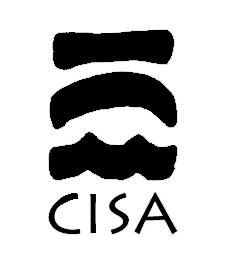DEVELOPMENT OF GOLD NANOSTARS DOPED FLEXIBLE SUBSTRATE FOR POLYSTYRENE MICROPLASTIC DETECTION USING SURFACE-ENHANCED RAMAN SCATTERING (SERS)
- Tham Thi Hong Nguyen - Research Laboratories of Saigon Hi-tech Park, Viet Nam - Faculty of Physics and Engineering Physics, VNUHCM, University of Science, Viet Nam
- Tuan Van Huynh - Faculty of Physics and Engineering Physics, VNUHCM, University of Science, Viet Nam
- Uyen Vo Phuong Pham - Research Laboratories of Saigon Hi-tech Park, Viet Nam
- Ngoc Bich Nguyen - Research Laboratories of Saigon Hi-tech Park, Viet Nam
- Ly Huu Truong - Research Laboratories of Saigon Hi-tech Park, Viet Nam
- Thang Xuan Trinh - Research Laboratories of Saigon Hi-tech Park, Viet Nam
- Vinh Quang Lam - Faculty of Physics and Engineering Physics, VNUHCM, University of Science, Viet Nam - Viet Nam National University HCMC, Viet Nam
- Phat Trong Huynh - Research Laboratories of Saigon Hi-tech Park, Viet Nam - Faculty of Physics and Engineering Physics, VNUHCM, University of Science, Viet Nam
- Available online in Detritus - Volume 31 - June 2025
- Pages 127-133
Access restricted to subscribed members only
Released under All rights reserved
Copyright: © 2024 CISA Publisher
Abstract
Microplastics are plastic fragments smaller than 5 millimeters, originating from primary sources such as manufactured beads and fibers and secondary degradation of larger plastic materials. As a significant environmental pollutant, microplastics require sensitive and efficient detection techniques. This study presents a simple and cost-effective surface-enhanced Raman scattering method using a flexible substrate composed of gold nanostars deposited on filter paper. Polystyrene particles with an average size of approximately 0.5 µm were used as a model microplastic pollutant to evaluate the performance flexible substrate. The surface-enhanced Raman scattering signal enhancement was analyzed using a benchtop Raman system with a 532 nm excitation wavelength, achieving a detection limit as low as 5 µg/mL and an enhancement factor of approximately 1300. The feasibility of detecting other microplastics, including polyethylene, polypropylene and polyethylene terephthalate, was assessed. The results demonstrate that the gold nanostar-based flexible surface-enhanced Raman scattering substrate offers a highly sensitive, portable, and cost-effective alternative for real-world microplastic monitoring in aquatic environments, outperforming conventional spectroscopic techniques.Keywords
Editorial History
- Received: 31 Dec 2024
- Revised: 30 May 2025
- Accepted: 16 Jun 2025
- Available online: 30 Jun 2025
References
Ashrafy, A. et al., (2023). Microplastics Pollution: A Brief Review of Its Source and Abundance in Different Aquatic Ecosystems. Journal of Hazardous Materials Advances, 9, 100215.
DOI 10.1016/j.hazadv.2022.100215
Chakraborty, I. et al., (2023). Raman spectroscopy for microplastic detection in water sources: a systematic review. International Journal of Environmental Science and Technology, 20(9), 10435-10448. 10.1007/s13762-022-04505-0
Dastbaz, Z. et al., (2021). Preparation of a stabilized aqueous polystyrene suspension via phase inversion. RSC Advances, 11(29), 17547-17557. 10.1039/D1RA02292J
Dong, H. et al., (2023). Overview of analytical methods for the determination of microplastics: Current status and trends. TrAC Trends in Analytical Chemistry, 167, 117261.
DOI 10.1016/j.trac.2023.117261
Ghosh, S. et al. (2023). Microplastics as an Emerging Threat to the Global Environment and Human Health. Sustainability, 15(14).
DOI 10.3390/su151410821
Huang, Z. et al., (2023). Analytical methods for microplastics in the environment: a review. Environmental Chemistry Letters, 21(1), 383-401. 10.1007/s10311-022-01525-7
Kihara, S. et al., (2022). Detecting polystyrene nanoplastics using filter paper-based surface-enhanced Raman spectroscopy. RSC Advances, 12(32), 20519-20522.
DOI 10.1039/D2RA03395J
Li, C. et al., (2022). Uncovering strong π-metal interactions on Ag and Au nanosurfaces under ambient conditions via in-situ surface-enhanced Raman spectroscopy. Chem, 8(9), 2514-2528. 10.1016/j.chempr.2022.06.008
Li, Z. et al., (2020). Recent developments of flexible and transparent SERS substrates. Journal of Materials Chemistry C, 8(12), 3956-3969. 10.1039/D0TC00002G
Lin, D.-Y. et al. (2023). Design, Fabrication, and Applications of SERS Substrates for Food Safety Detection: Review. Micromachines, 14(7).
DOI 10.3390/mi14071343
Lin, S. et al., (2019). Fabrication of flexible paper-based Surface-enhanced Raman scattering substrate from Au nanocubes monolayer for trace detection of crystal violet on shell. Journal of Raman Spectroscopy, 50(8), 1074-1084.
DOI 10.1002/jrs.5620
Liu, Y. et al., (2024). Direct detection of polystyrene microspheres by using easily fabricated Ag core embedded Au film SERS substrates with high sensitivity. Journal of Environmental Chemical Engineering, 12(5), 113311.
DOI 10.1016/j.jece.2024.113311
López-Lorente, Á. I., (2021). Recent developments on gold nanostructures for surface enhanced Raman spectroscopy: Particle shape, substrates and analytical applications. A review. Analytica Chimica Acta, 1168, 338474.
DOI 10.1016/j.aca.2021.338474
Mallik, A. et al., (2023). Study of feeding biology and diet-associated microplastic contamination in selected creek fishes of northeastern Arabian Sea: A multi-species approach. Marine Pollution Bulletin, 190, 114875.
DOI 10.1016/j.marpolbul.2023.114875
Mikac, L. et al., (2023). Surface-enhanced Raman spectroscopy for the detection of microplastics. Applied Surface Science, 608, 155239.
DOI 10.1016/j.apsusc.2022.155239
Ng, C. H. et al., (2023). Plastic waste and microplastic issues in Southeast Asia. 11. 10.3389/fenvs.2023.1142071
Pan, B. et al., (2024). Global trends and hotspots evolution in soil microplastic pollution research: A bibliometric analysis based on the Web of Science. Ecological Indicators, 161, 111974.
DOI 10.1016/j.ecolind.2024.111974
Randhawa, J. S., (2023). Advanced analytical techniques for microplastics in the environment: a review. Bulletin of the National Research Centre, 47(1), 174. 10.1186/s42269-023-01148-0
Rochman, C. M. et al., (2015). Anthropogenic debris in seafood: Plastic debris and fibers from textiles in fish and bivalves sold for human consumption. Scientific Reports, 5(1), 14340. 10.1038/srep14340
Schiavi, S. et al., (2023). Plasmonic Nanomaterials for Micro- and Nanoplastics Detection. Applied Sciences, 13(16).
DOI 10.3390/app13169291
Truong Tran Nguyen, S. et al., (2023). Riverine Microplastics Pollution in Vietnam: A Review of Current Scientific Knowledge and Legal Policies. Applied Environmental Research, 45(3). 10.35762/AER.2023014
Willitsford, A. et al., (2013). Resonance enhanced Raman scatter in liquid benzene at vapor-phase absorption peaks. Optics Express, 21(22), 26150-26161. 10.1364/OE.21.026150
Willitsford, A. H. et al., (2016). Resonance-Enhanced Raman Scattering of Ring-Involved Vibrational Modes in the 1B2u Absorption Band of Benzene, Including the Kekule Vibrational Modes ν9 and ν10. The Journal of Physical Chemistry A, 120(4), 503-506. 10.1021/acs.jpca.5b08159
Xie, L. et al., (2022). State of the art in flexible SERS sensors toward label-free and onsite detection: from design to applications. Nano Research, 15(5), 4374-4394. 10.1007/s12274-021-4017-4
Xu, G. et al., (2020). Surface-Enhanced Raman Spectroscopy Facilitates the Detection of Microplastics <1 μm in the Environment. Environmental Science & Technology, 54(24), 15594-15603.
DOI 10.1021/acs.est.0c02317
Yin, R. et al., (2021). Sensitive and rapid detection of trace microplastics concentrated through Au-nanoparticle-decorated sponge on the basis of surface-enhanced Raman spectroscopy. Environmental Advances, 5, 100096.
DOI 10.1016/j.envadv.2021.100096
Zhang, D. et al., (2021). Advances in flexible surface-enhanced Raman scattering (SERS) substrates for nondestructive food detection: Fundamentals and recent applications. Trends in Food Science & Technology, 109, 690-701.
DOI 10.1016/j.tifs.2021.01.058
Zhang, Y. et al., (2023). Fabrication of flexible SERS substrate based on Au nanostars and PDMS for sensitive detection of Thiram residue in apple juice. Spectrochimica Acta Part A: Molecular and Biomolecular Spectroscopy, 297, 122721.
DOI 10.1016/j.saa.2023.122721
Zhao, X., & You, F., (2024). Microplastic Human Dietary Uptake from 1990 to 2018 Grew across 109 Major Developing and Industrialized Countries but Can Be Halved by Plastic Debris Removal. Environmental Science & Technology, 58(20), 8709-8723. 10.1021/acs.est.4c00010
Zhou, G. et al., (2024). Observing π–Au Interaction between Aromatic Molecules and Single Au Nanodimers with a Subnanometer Gap by SERS. Analytical Chemistry, 96(1), 197-203. 10.1021/acs.analchem.3c03600



